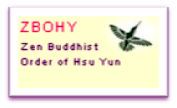In a traditional Chinese monastery, a ChanQi (retreat) is a very big event that is known long in advance and may attract many practitioners from all over, relative to the reputation of the monastery and its leading master. The rules may vary and adapt to a special practice or another.
You see, a week of Chan practice isn’t exactly prepared as a week of Buddha Name chanting or Sutra Recitation. But what the priest or master leading the retreat is waiting from every single participant is
a total dedication to the practice for the time of the practice. A Retreat is not something you do to attend as social meeting or like we would do at a nice workshop… a retreat is a personal vow. A vow of utmost sincerity and dedication.
We are a reformed Chan/Zen Order, a sino-american Chan/Zen Order founded by Chan Master JydIn Shakya and Zen Teacher MingZhen Shakya. We adapt our practice to our own contexts. But at the root of our practice lies that same spirit of utmost sincerity and dedication to the practice. At the center of the practice is a vow.
A retreat is meeting a personal vow. it is a time for strong dedication to unveil our True Nature. A time to only cultivate a Chan/Zen Mind and act with utmost sincerity… a totality. A time of no separation.
Traditionally, a ChanQi is lead by three priests at least: a teaching priest, a JiaoYuan/Shusso (responsible for the monks attending the retreat) and a ritual/ceremony priest. Needless to say that in most of our Western retreats these roles are reduced to what is most needed functions. it is also done for seven days in a row. Nowadays, the name ChanQi or Sesshin or retreat is given at all most any length of intensive practice even half days of practice.
What is important is just that ‘intensive’ side of the practice. Make the vow to give your total body and Mind to the practice and to unveil your Buddha Nature. It is the place and time for it. It is a time and place to be intense.
You see, the base of our practice is the daily practice of establishing a solid foundation through daily liturgy and meditation, through discipline and studying. It could be called the Calm side of the practice. A practice of harmonising with our reality of householders.
But we also may need at certain times in our spiritual life, a chance to experience a time and place to develop more intensity, more dedication. That is what a retreat is good for. Again, it is something you vow to give yourself to, because you need it in your spiritual journey. A good thing would be to ask your Zen teacher or Zen Priest before thinking about engaging in one.
Bear also in mind that this intense practice can be practiced anywhere, in a formal Buddhist setting or in Nature, alone or in a large group. What allows you to accomplish the great vow is what is needed. This is also an essential part of our Linji/Rinzai Zen Heritage: recognizing what is need and then working towards it with utmost dedication and humility! Then, just do it!
See the time of the retreat, in a big Zen monastery, a room in your family summer house, a shed or a tent in any nearby forest park, as the time of the great fire. The time of the great burning of all the small impurities that resist to the daily practice you established. It is the great burning of the self. The Great Burning of the Huatou (jp.Wato). Huatou/Wato means before the word, before even thinking, before form… before difference… it is our True Root, our True Nature.
It is the existential question: Who? In every act, Who? Such a true question doesn’t need our small answers full of words. Our Zen Path is a Path of True Questions… not a Path of giving answers. A single question, taken seriously, intimately could change our entire life and turn our world view upside down. Who?
Some words of general advice for the time of Intensive practice
- Be simple, harmonise with what is
- Be Humble, know your limits and those of others
- Be Sincere, only use what is needed.
- Every act is the Way! From the first bell to the last of the day vow to realise your True Nature
- Give equal importance to Zen sitting and walking meditation.
- Balance indoor and outdoor practice.
- Eat little, sleep little.
- Allow Yezuo/Yazo (night sitting meditation outdoor or indoor) at will.
- Listen/see the teacher once a day ( or read the Master’s teachings).
- Constantly, give your Body and Mind to KuanYin (jp.Kannon) Bodhisattva and receive her grace.
A retreat is a time for attention. Sometimes the Linji/Rinzai masters are caricaturized with their sticks, shouting Katsu and give stick blows to their students. The roots of these practices was a calling for attention, here and now, Who? Who is reading this paper?
The Katsu shouting still exists in China today, our late Ming Zhen Shakya used to talk about the few time where she saw and heard master WeiYin Shakya shout a loud KAT! As she used to say, the literal sense of ‘kat’ was ‘attention’ in English. But the master seemed to use it in a way she understood as ‘cut all things’. That is what she heard when the master shouted: CUT!
So, remember that the retreat is precisely this, a time and place to manifest Who?
A time and place to manifest, in our actions, our existential VOW to CUT all roots of suffering!
Images: The Desert Stag by Jiaoyuan Qian Yue
NOTE: If you’d like to comment or ask a question to Master Fa Shi Yao Xin Shakya you may contact him by email: yaoxinshakya.zbohy@gmail.com




